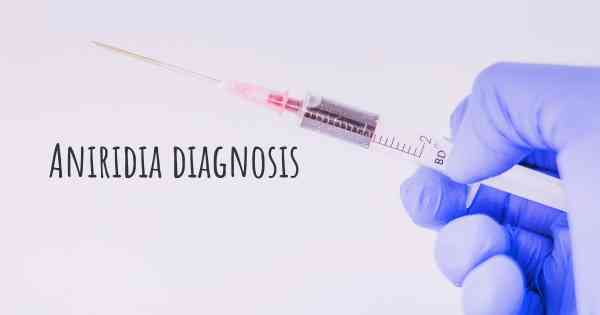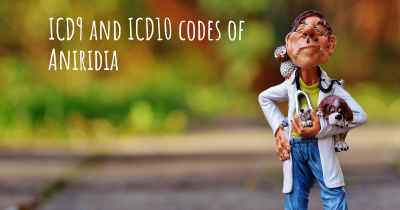How is Aniridia diagnosed?
See how Aniridia is diagnosed. Which specialists are essential to meet, what tests are needed and other useful information for the diagnosis of Aniridia

Aniridia is a rare genetic disorder characterized by the partial or complete absence of the iris, the colored part of the eye. It is typically present at birth and affects both eyes. Aniridia can lead to various visual impairments and other associated eye conditions, making early diagnosis crucial for appropriate management and treatment.
Diagnosing Aniridia involves a comprehensive evaluation of the patient's medical history, a thorough eye examination, and genetic testing.
Medical History
The first step in diagnosing Aniridia is gathering the patient's medical history. This includes information about the presence of any eye-related symptoms, family history of eye disorders, and any other relevant medical conditions. Understanding the patient's medical background helps the healthcare provider assess the likelihood of Aniridia and determine the appropriate diagnostic approach.
Eye Examination
An eye examination is a critical component of diagnosing Aniridia. It involves a series of tests and evaluations performed by an ophthalmologist or an optometrist. The eye examination may include the following:
Visual Acuity Test
This test measures the clarity and sharpness of the patient's vision. It is typically performed using an eye chart and helps determine the extent of visual impairment caused by Aniridia.
Slit Lamp Examination
A slit lamp is a specialized microscope that allows the healthcare provider to examine the structures of the eye in detail. This examination helps identify any abnormalities in the cornea, lens, and other parts of the eye.
Iris Examination
Since Aniridia is characterized by the absence or underdevelopment of the iris, a thorough examination of the iris is crucial. The healthcare provider will carefully assess the structure, size, and pigmentation of the iris to determine if Aniridia is present.
Intraocular Pressure Measurement
Measuring the intraocular pressure helps assess the risk of developing glaucoma, a common complication associated with Aniridia. Elevated intraocular pressure can indicate the need for additional monitoring and treatment.
Fundus Examination
The fundus examination involves the evaluation of the back of the eye, including the retina, optic nerve, and blood vessels. This examination helps identify any abnormalities or signs of associated eye conditions.
Genetic Testing
Genetic testing is a crucial component of diagnosing Aniridia. It involves analyzing the patient's DNA to identify specific genetic mutations or deletions associated with Aniridia. Genetic testing can confirm the diagnosis, determine the inheritance pattern, and provide valuable information for genetic counseling.
There are several methods of genetic testing used for Aniridia diagnosis:
Direct DNA Sequencing
This method involves sequencing the patient's DNA to identify mutations or deletions in the PAX6 gene, which is responsible for iris development. Direct DNA sequencing provides a definitive diagnosis of Aniridia in most cases.
Fluorescence In Situ Hybridization (FISH)
FISH is a technique used to detect specific genetic abnormalities. In Aniridia diagnosis, FISH can identify deletions or rearrangements involving the PAX6 gene.
Chromosomal Microarray Analysis
This advanced genetic testing method can detect small deletions or duplications of genetic material. It provides a comprehensive analysis of the patient's genome and can identify additional genetic abnormalities associated with Aniridia.
Once a diagnosis of Aniridia is confirmed, additional evaluations may be necessary to assess the extent of visual impairment and identify any associated eye conditions. These evaluations may include electroretinography (ERG), ultrasound imaging, and consultation with other specialists such as a pediatric ophthalmologist or a geneticist.
It is important to note that diagnosing Aniridia requires the expertise of healthcare professionals specialized in ophthalmology and genetics. Therefore, if Aniridia is suspected, it is crucial to seek medical attention from qualified healthcare providers.
The diagnosis needs to be confirmed and clarified through genetic testing.
Patients should then be checked annually by an eye specialist for issues such as glaucoma and cataract and keratopathy. Low vision clinics can also be useful.
Posted Mar 5, 2017 by James 1205
Posted Mar 23, 2017 by KATHERINE HASLAM 1000
Posted Jan 30, 2019 by Rachel and Scarlett 1400
The specialist is an ophthalmologist.
It is easy to realize if you have aniridia is something that looks quickly at the look in the eyes.
The problem is that there are still doctors who do not know very well what it is.( doctors of family medicine, non-specialists
Posted Jun 17, 2017 by Antonia 2501
Posted Sep 16, 2017 by Loana 1701








